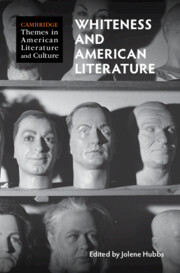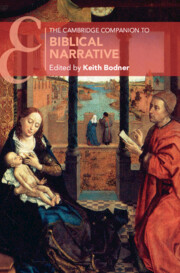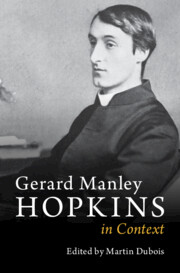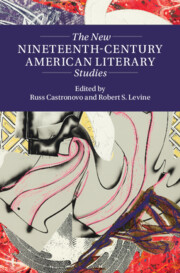Refine search
Actions for selected content:
101 results
Uninvited Guests and Biting Dogs: Munīr Lāhorī and the Definition of an Indo-Persian Literary Tradition
-
- Journal:
- Iranian Studies ,
- Published online by Cambridge University Press:
- 27 August 2025, pp. 1-16
-
- Article
-
- You have access
- Open access
- HTML
- Export citation
Chapter 1 - The Quarrel of the Idealists and the Naturalists
-
- Book:
- Zola's Dream
- Published online:
- 07 August 2025
- Print publication:
- 21 August 2025, pp 29-69
-
- Chapter
- Export citation
6 - The Literary Singularity of Roots Manuva’s Awfully Deep
- from Part II - Approaches to Rap
-
-
- Book:
- The Cambridge Companion to Global Rap
- Published online:
- 25 July 2025
- Print publication:
- 14 August 2025, pp 100-112
-
- Chapter
- Export citation

Whiteness and American Literature
-
- Published online:
- 19 June 2025
- Print publication:
- 03 July 2025
The Failure of Form: Reading Liminality Computationally in Dostoevskii’s The Double
-
- Journal:
- Slavic Review / Volume 84 / Issue 1 / Spring 2025
- Published online by Cambridge University Press:
- 21 July 2025, pp. 23-42
- Print publication:
- Spring 2025
-
- Article
-
- You have access
- Open access
- HTML
- Export citation
Chapter 2 - Untangling the Threads of the Biblical Account with Literary Critical Scholarship
- from Part I - The United Monarchy in the Bible and Contemporary Scholarship
-
- Book:
- The Bible's First Kings
- Published online:
- 16 January 2025
- Print publication:
- 20 February 2025, pp 20-58
-
- Chapter
- Export citation
Prolegomenon
-
- Book:
- Interaction in Poetic Imagery
- Published online:
- 31 January 2025
- Print publication:
- 06 February 2025, pp xli-xlvii
-
- Chapter
- Export citation
1 - The Literary Worlds of Genesis
-
-
- Book:
- The Cambridge Companion to Biblical Narrative
- Published online:
- 30 January 2025
- Print publication:
- 06 February 2025, pp 12-36
-
- Chapter
- Export citation

The Cambridge Companion to Biblical Narrative
-
- Published online:
- 30 January 2025
- Print publication:
- 06 February 2025

Gerard Manley Hopkins in Context
-
- Published online:
- 16 January 2025
- Print publication:
- 16 January 2025
Introduction
-
-
- Book:
- Gerard Manley Hopkins in Context
- Published online:
- 16 January 2025
- Print publication:
- 16 January 2025, pp 1-4
-
- Chapter
- Export citation

The New Nineteenth-Century American Literary Studies
-
- Published online:
- 02 January 2025
- Print publication:
- 23 January 2025
Licit magic in Pashto: artistry and ethnicity in the verses of two classical Pashtun poets
-
- Journal:
- Journal of the Royal Asiatic Society / Volume 35 / Issue 1 / January 2025
- Published online by Cambridge University Press:
- 16 December 2024, pp. 161-179
- Print publication:
- January 2025
-
- Article
- Export citation
Coda
-
- Book:
- Evolutionary Aestheticism in Victorian Culture
- Published online:
- 05 December 2024
- Print publication:
- 12 December 2024, pp 187-198
-
- Chapter
- Export citation
SARDÎSTÔN: A NEW TERM FOR AN OLD CONCEPT IN RABBINIC LITERATURE
-
- Journal:
- The Classical Quarterly / Volume 74 / Issue 2 / December 2024
- Published online by Cambridge University Press:
- 26 February 2025, pp. 806-809
- Print publication:
- December 2024
-
- Article
-
- You have access
- Open access
- HTML
- Export citation
2 - Lucian and the Culture of Criticism
- from Part I
-
-
- Book:
- The Cambridge Companion to Lucian
- Published online:
- 07 November 2024
- Print publication:
- 21 November 2024, pp 27-49
-
- Chapter
- Export citation
Chapter 12 - Literary Gaming
-
-
- Book:
- The Cambridge Companion to Literature in a Digital Age
- Published online:
- 29 November 2024
- Print publication:
- 14 November 2024, pp 212-232
-
- Chapter
- Export citation
46 - Blogging in Britain: Essays in the Digital Age
- from Part V - The Essay and the Essayistic Today
-
-
- Book:
- The Cambridge History of the British Essay
- Published online:
- 31 October 2024
- Print publication:
- 04 July 2024, pp 696-711
-
- Chapter
- Export citation
The Value of Christological Titles, in Conversation with Leander Keck
-
- Journal:
- New Testament Studies / Volume 70 / Issue 3 / July 2024
- Published online by Cambridge University Press:
- 30 September 2024, pp. 357-370
- Print publication:
- July 2024
-
- Article
- Export citation
Chapter 2 - Contrasting Pairs and Twin Graves
- from Part I - Between Literature and Scholarship
-
-
- Book:
- Writing Literary History in the Greek and Roman World
- Published online:
- 07 June 2024
- Print publication:
- 27 June 2024, pp 40-61
-
- Chapter
- Export citation
